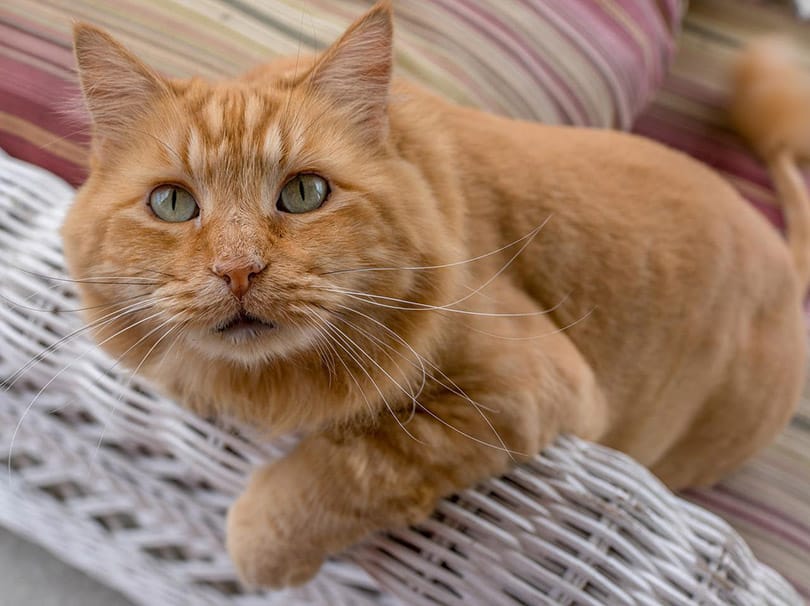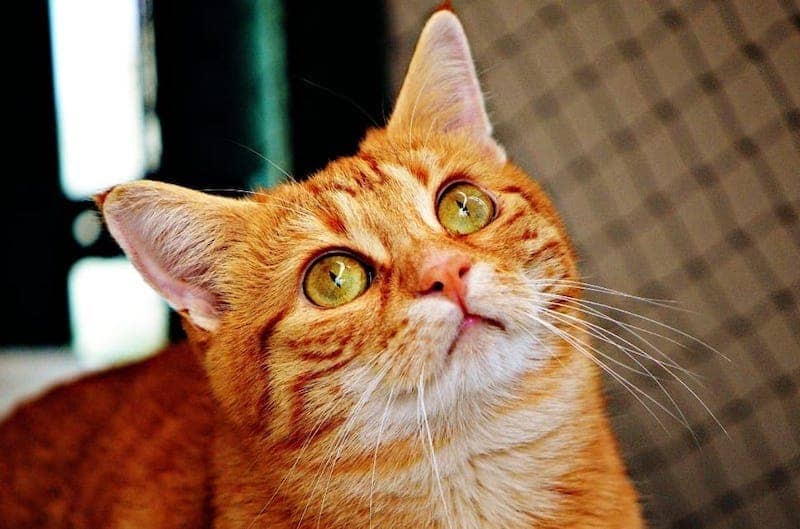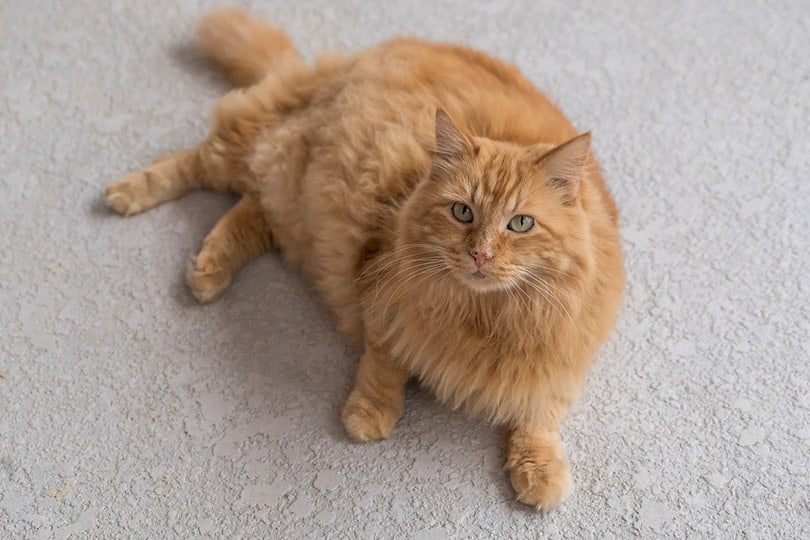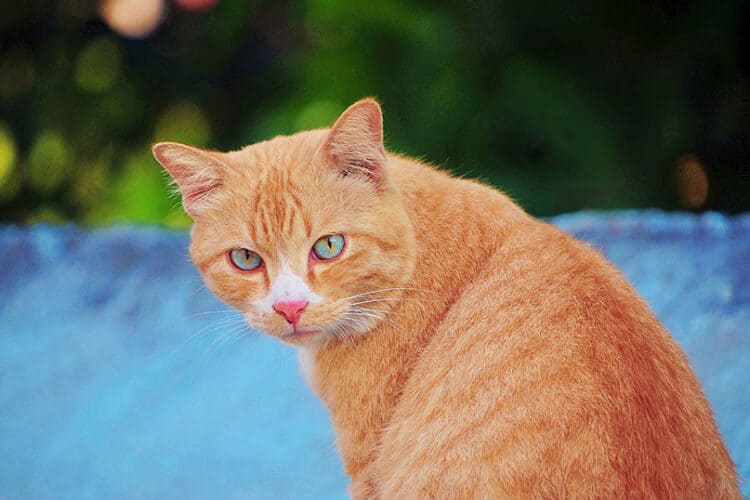It is a commonly held belief that orange cats are always male. However, this is not actually the case. While the majority of orange cats are male, there are also a significant number of female orange cats. In fact, this is just one of many myths that persist about orange cats. Let’s take a look at which cat stories are fact, and which are myths, starting with their colors and gender.
Why Are Most Orange Cats Male?
Up to 80% of orange tabby cats are born male. The reason for this discrepancy is due to a genetic quirk known as “sex-linked inheritance.” This means that the gene for orange fur is linked to the X sex chromosome, which is why most orange cats are male.
The Genetics
The orange gene is carried on the X chromosomes. Male chromosomes are XY, while females are XX. The gene for orange fur lives in the X chromosome, so if a kitten gets an X from dad and an X from mom, and both of those X chromosomes carry the orange gene, the kitten will be an orange female. If the cat gets an X gene from mom that carries the orange gene and a Y from the father, it will also be orange.
The Statistics
The odds of having an orange cat are about two to one. This is because the gene that causes orange fur is only found on the X chromosome. Since males have only one X chromosome, they’re much more likely to be orange than females, who have two X chromosomes.
In A Nutshell
The color of a cat’s fur is determined by its genes, or the traits it inherits from its parents. In order for a female cat to be born orange, she has to get the orange gene from both her mom AND her dad. She will need two orange genes. If a cat is born male, he will only need one orange gene, from the mom.
Other Myths About Orange Cats

There are a few other myths about orange cats that are not backed up by science. Let’s break each myth down, one by one.
Myth: Orange Cats are Always Left-Handed
One myth is that orange cats are more likely to be left-handed. This is not true – there is no scientific evidence to suggest that cats have a preferred paw, let alone that orange cats are more likely to be left-handed.
Myth: Orange Cats Have Different Personalities
There is no scientific evidence to suggest that orange cats have different personalities than other colored cats. However, many people believe that orange cats are more active and outgoing than other cats. This is likely due to the fact that most orange cats are male.
Male cats tend to be more active and outgoing than female cats, which may give the impression that all orange cats have bold personalities.
Myth: Orange Cats Only Have Orange Kittens
No, orange cats can have kittens of any color. The color of a kitten’s fur is determined by its parents’ genetic makeup, not its own. So, an orange cat can have a black kitten, a white kitten, or a kitten of any other color.
Myth: Orange Cats Are More Hypoallergenic
There is no such thing as a hypoallergenic cat, orange or otherwise. All cats produce allergens, which are proteins that can cause an allergic reaction in some people.
However, some people may be more allergic to certain breeds of cat than others. For example, people who are allergic to cats may find that they are not as allergic to Devon Rexes or Cornish Rexes, as these breeds produce less of the Fel d 1 allergen.
Myth: Orange Cats More Likely To Be Outdoor Cats
There is no scientific evidence to suggest that orange cats are more likely to be outdoor cats. However, many people believe that orange cats are more independent and less needy than other cats. This is likely due to the fact that most orange cats are male.
Male cats tend to be more independent than female cats, which may give the impression that all orange cats prefer to spend time outdoors. Ultimately, it’s up to you to decide whether your orange cat is an indoor or outdoor cat.
Myth: Orange Cats Have More Health Problems
There is no scientific evidence to suggest that orange cats have more health problems than other colored cats. However, some orange cats may be at a higher risk for certain health conditions -but that’s due to their breed, not their color.
For example, Orange Tabby cats are more likely to develop diabetes than other cats. This is because they are prone to obesity, which can lead to diabetes. Additionally, Orange Tabby cats are also more susceptible to feline infectious peritonitis (FIP), which is a viral infection that can be fatal.

Myth: Orange Cats Live Longer
There is no scientific evidence to suggest that orange cats live longer than other colored cats. However, many people believe that orange cats have longer lifespans due to their independent nature.
This is likely because orange cats are less likely to form close bonds with their owners, and they’re less likely to be affected by the death of a close companion. Ultimately, the lifespan of an orange cat depends on its individual genetics and lifestyle.
Myth: Are Orange Cats Friendlier
Many people believe that orange cats are more friendly than cats of other colors. However, there is no scientific evidence to support this claim.
It’s possible that the myth originated from the fact that orange cats are more likely to be male. Male cats tend to be more friendly and social than female cats, so it’s possible that people mistakenly assumed that all orange cats are friendly.
Myth: Orange Cats Shed More
Whether a cat sheds is determined by its breed and not by its color. For example, Siamese cats and Devon Rexes are known for being minimal shedders, while Maine Coons and Siberian Cats are known for being heavy shedders. That goes for cats of any color.
Myth: Orange Cats Are Bossy
It’s not that orange cats are bossy, it’s that they’re more vocal than other cats. Orange cats are more likely to communicate their needs to their owners, and they’re also more likely to meow when they want attention. However, this doesn’t mean that orange cats are necessarily bossy. Ultimately, the personality of an orange cat depends on its individual genetics and lifestyle.
Myth: Orange Cats Need Special Care
No, orange cats do not need special care. They can eat the same food, drink the same water, and live in the same type of environment as any other colored cat. However, it’s always a good idea to consult with your veterinarian if you have any questions or concerns about your cat’s health.
Myth: Orange Cats Are All Related
There are a few different breeds of orange cats, but any cat can be orange, regardless of breed. Think of it like red hair. There are lots of people with red hair you’re not related to, but some people with red hair are related to each other.
Cat Breeds That Have Orange-Furred Cats Include:
- Devon Rex
- Cornish Rex
- California Spangled
- Siamese
- Manx
- Persian
- Birman
- Sphynx
Myth: Orange Cats Are Messy
Male cats also have a tendency to spray urine around the house to mark their territory, while female cats are generally much cleaner. On the other hand, female cats go into heat every few months and can be quite vocal during this time, while male cats do not experience this.
Facts About Orange Cats

As you can see, there are a lot of myths about orange cats, and cats in general. Now let’s look at some of the facts.
Fact: Orange Cats Make Good Pets
Orange cats can make good pets. They tend to be independent, which means they don’t need as much attention as other cats. They’re also less likely to form close bonds with their owners, which can be beneficial if you’re looking for a low-maintenance pet.
Fact: Orange Cats Are More Susceptible To Sunburn
Orange cats are more susceptible to sunburn than other cats. This is because they have less pigment in their skin, which offers less protection from the sun’s UV rays.
If you have an orange cat, it’s important to keep it indoors during peak sunlight hours. You should also apply sunscreen to your cat if it will be spending time outdoors.
Fact: Orange Cats May Be At Higher Risk For Certain Health Conditions
As we mentioned earlier, orange cats may be at a higher risk for certain health conditions, such as diabetes and feline infectious peritonitis (FIP). However, these conditions are more likely to affect Orange Tabby cats than other orange cats.
Conclusion
In conclusion, orange cats can be both male and female, but they’re more likely to be male. They’re also just as loving and affectionate as any other colored cat, and they don’t require any special care. So next time you see an orange cat, don’t assume it’s a boy — it could very well be a girl!
Featured Image Credit: Pixabay
















